Clear, 66° F
Spring and summer conditions throughout the Big Horn Basin have produced average to above-average precipitation and lower temperatures through July. In addition, the 2023-24 winter was relatively …
This item is available in full to subscribers.
The Powell Tribune has expanded its online content. To continue reading, you will need to either log in to your subscriber account, or purchase a subscription.
If you are a current print subscriber, you can set up a free web account by clicking here.
If you already have a web account, but need to reset it, you can do so by clicking here.
If you would like to purchase a subscription click here.
Please log in to continue |
|
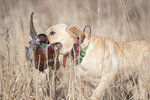

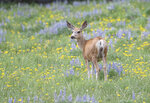
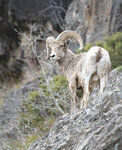

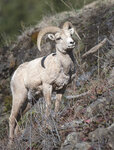
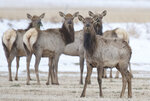
Spring and summer conditions throughout the Big Horn Basin have produced average to above-average precipitation and lower temperatures through July. In addition, the 2023-24 winter was relatively mild across the region. These conditions bode well for wildlife within the Cody Region. If conditions continue and there is good late-summer/fall precipitation, wildlife populations should benefit.
Pronghorn
Pronghorn populations and hunting success continue to be down throughout the Big Horn Basin, and a conservative framework remains in place for the 2024 hunting seasons in a majority of these areas. The northern portion of the Big Horn Basin’s pronghorn herds are relatively stable. Early field observations suggest good fawn production throughout much of the region. For those who drew pronghorn licenses within the region, hunting should be slightly better than last year.
Deer
Winter survival appears to be at or above average throughout much of the region. Focal herd data suggests overwinter survival is higher in the Bighorn Mountains mule deer herds than the Upper Shoshone herd. Fawn production appears to be slightly better than last year based on early season field observations. The region observed improved fawn production in most of the deer herds during the 2023 deer classifications. A majority of mule deer herds within the region are currently below population management objectives. Hunters should expect conditions and success to be similar to 2023. Prolonged drought and increasing chronic wasting disease prevalence have had a negative impact on Big Horn Basin deer herds over the past several years. Managers are hopeful the recent positive trends in precipitation will provide a needed boost to mule deer populations in the region.
Elk
Most herds continue to perform well within the region, with a majority of the herds at objective. Based on improved precipitation and early field observations, calf production is up this year. Because of this, elk hunters should expect good elk hunting within the Cody Region again this year. One significant change to the 2024 elk regulations is the combination of Elk Hunt Areas 53 and 54, and the splitting off a portion of Hunt Area 54 east of Highway 120, and adding the area into Hunt Area 65. These changes were made to provide better options to address elk management challenges within the Clarks Fork elk herd. Additionally, there was a new Type 9 hunt (archery only) added into Hunt Area 61 for the 2024 season.
Moose
Herds within the region have been performing better over the past several years. The Bighorn Mountain herd saw a slight reduction in the 2023 trend count and as a result, quotas were reduced to address this change. Data collected for Hunt Area 9 in the Absaroka herd suggests good calf production in 2023. Managers are observing a slight increase in moose numbers in Hunt Area 11, particularly within the Sunlight Basin area.
Moose hunters fortunate enough to have drawn a license should expect good moose hunting conditions and success in 2024. Moose hunters are encouraged to provide teeth from their harvested animals (lower center two incisors) to assist Game and Fish in their moose management. Additionally, hunters are encouraged to bring the head of their harvested moose to Game and Fish to allow biologists to collect CWD samples and carotid artery worm samples to better monitor disease in the population.
Bighorn sheep
The Absaroka (Hunt Areas 1-5) and Devils Canyon (Hunt Area 12) herds are located within the Cody Region. Sheep numbers are within management objectives for the Absaroka herd, and have recently fallen below objective in the Devils Canyon herd due to a recent disease die-off. It is estimated that the die-off reduced the Devils Canyon herd by 40%, but we have observed promising lamb recruitment thus far and anticipate the herd will recover. Ram licenses within the Devils Canyon herd were slightly increased from 2 to 3 Type 1 licenses, and a new Type 2 license was created with five licenses for any ram less than three quarter curl. These new Type 2 licenses are designed to focus harvest on younger rams to prevent them from wandering out of the Devils Canyon herd and potentially returning with new diseases. Licenses within the Absaroka herd were reduced in Hunt Areas 3 and 4 due to fewer mature rams observed during 2024 sheep surveys, and lower hunter success in these areas. Hunt Area 5 licenses were increased due to an increase in the number of sheep observed, and improved hunter success during the 2023 season. Those fortunate to have drawn bighorn sheep licenses within the region should enjoy good hunting this fall.
Mountain Goat
The Beartooth herd (Hunt Areas 1, 3 and 5A) is within its population management objective. The 2024 season structure has been designed to stabilize or slightly increase goats in Hunt Area 3 while maintaining harvest levels within Hunt Area 1. Licenses in Hunt Area 3 were reduced for the 2024 season as goat populations are nearing their management objective. Additionally, Hunt Area 3 Type 2 license holders will also be allowed to hunt within Hunt Area 5 to prevent goats from moving south into Hunt Areas 3, 4 and 5. Hunt Area 1 licenses remained the same for 2024. Those fortunate enough to have drawn a mountain goat license should have a good hunt.
Upland game/small game
The region has received similar precipitation to last year, thus continuing the recent trend of good upland/small game habitats. Upland bird hunters should expect similar or slightly improved hunting conditions compared to last year. Chukar and Hungarian partridge populations are rebounding but still are not at the peak of their cycles and field managers are not seeing as many broods as they normally do when populations are high. Early observations from field managers suggest sage grouse production may have improved from last year. Rabbit hunting should be similar or slightly improved from last season.
Wildlife disease management
Hunters are encouraged to assist wildlife managers in the collection of wildlife disease samples. If you receive a brucellosis sample kit in the mail, please carry the sample kit and collect a blood sample from a harvested elk. Additionally, there are several priority chronic wasting disease sample collection hunt areas within the region. Game and Fish asks hunters who harvest deer or elk in priority areas to provide the head and a few inches of the neck so biologists can collect a CWD sample. Priority deer areas include the Southwest Bighorn herd (HA’s 35-37, 39, 40 and 164) and the Shoshone River herd (HA’s 121, 122 and 123). Elk priority areas are the Cody elk herd that consist of Hunt Areas 55, 56, 58-61, and 66. Submit samples at a Game and Fish check station or call the regional office at (307) 527-7125 to make arrangements.
Avoiding wildlife violations
With hunting seasons getting underway across Wyoming, Wyoming Game and Fish Department officials are reminding hunters to consult a current copy of regulations for the species they intend to hunt and familiarize themselves with the rules before heading to the field. Season dates or other license limitations can change from year to year, so be sure to refer to the regulations, even if you have hunted in the same hunt area for many years. If you are unclear on any regulation, call your local game warden or your local regional Game and Fish office.
Most hunters follow hunting laws and regulations. Occasionally, however, some people inadvertently or intentionally run afoul of the law. Below is a list of how to avoid violating Wyoming game laws.
1. Tag your harvest — Every big game, trophy game and wild turkey license has a carcass coupon attached. Each license has the tagging instructions printed on the coupon. There are four steps to properly “tag” big game, trophy game or wild turkey once you have harvested an animal:
• Detach the carcass coupon from the license.
• Date the carcass coupon by cutting out the date and month of the kill.
• Sign the carcass coupon.
• Attach the coupon to the carcass before leaving the site of the kill. (The coupon may be removed during transportation to prevent its loss, but it must be in possession of the person accompanying the carcass.)
2. Keep evidence of gender — Many Wyoming hunting licenses require the taking of a specific sex of animal. There are also season dates in some hunt areas when only a specific sex of animal can be taken. To satisfy the proof of sex requirement the regulation states: “in areas where the taking of any big game animal is restricted to a specific sex of animal, either the visible external sex organs, head or antlers shall accompany the animal as a whole or edible portion thereof.”
3. Get your conservation stamp — Hunters and anglers must purchase a conservation stamp to hunt and fish in Wyoming. There are exceptions for holders of a Pioneer license or daily licenses. Those individuals should refer to regulations for details.
4. Don’t shoot from a vehicle — It is illegal to take or pursue any game species from a motorized vehicle. This includes ATVs and snowmobiles. Hunters possessing a disabled hunter permit issued by Wyoming Game and Fish are exempt from this requirement.
5. Don’t shoot from a public road — It is illegal to shoot a firearm or bow from, across or along a public road. A public road is any road that is open to the public for vehicular traffic. The road surface, the area between fences on a fenced public road or highway and the area 30 feet perpendicular to the road surface on unfenced roads is considered the public road. Two-track trails on public land are not considered public roads for this purpose.
6. Know what area you are hunting in — Hunters must know the boundaries of their hunt area and BLM maps are an excellent source for information. There are also many online applications to assist hunters. If you have questions about a specific boundary, talk to your local game warden or biologist.
7. Avoid trespassing — Hunters must have permission from the landowner to cross or hunt on private land. Game and Fish recommends licensees obtain the signature of the landowner, lessee, or agent of the landowner as evidence that permission to hunt has been granted.
8. Wear fluorescent orange/fluorescent pink clothing — Big game and trophy game rifle and muzzleloader hunters are required to wear one exterior garment of fluorescent orange or fluorescent pink. This also applies to archery hunters hunting during the rifle season. This could be a hat, shirt, jacket, coat, vest or sweater. Bird hunters on Game and Fish Wildlife Habitat Management Areas are also required to wear hunter orange/pink. Fluorescent orange or fluorescent pink camouflage is legal.
9. Have your hunter safety card — No person born on or after Jan. 1, 1966 may take any wildlife by the use of firearms on land other than that of his/her own family unless they possess and can exhibit a hunter safety card or are enrolled in the Game and Fish Hunter Mentor Program.
10. Know if you need a special management permit — Pheasant hunters are reminded that a Special Pheasant Management Permit is required to hunt Wildlife Habitat Management Areas and Walk-In hunting areas that are stocked with pheasants. These stamps are available for $15.50 at any license vendor.
If you witness a potential wildlife violation, write down as many details as you can, such as the time and location of the violation, a physical description of any vehicles (including the license plate number) or people involved. Photos and videos are particularly valuable.
Information can then be relayed to a warden through our Stop Poaching Hotline at 1-877-WGFD-TIP (1-877-943-3847). It is available 24 hours a day and on holidays. You can also report violations by texting “WGFD” to TIP411 (847-411) or by logging into the Game and Fish website and clicking on the law enforcement link.
Anyone reporting a tip can remain anonymous. Individuals submitting information leading to a conviction can be eligible for a monetary reward of up to $5,000 through the Wyoming Wildlife Protector’s Association.